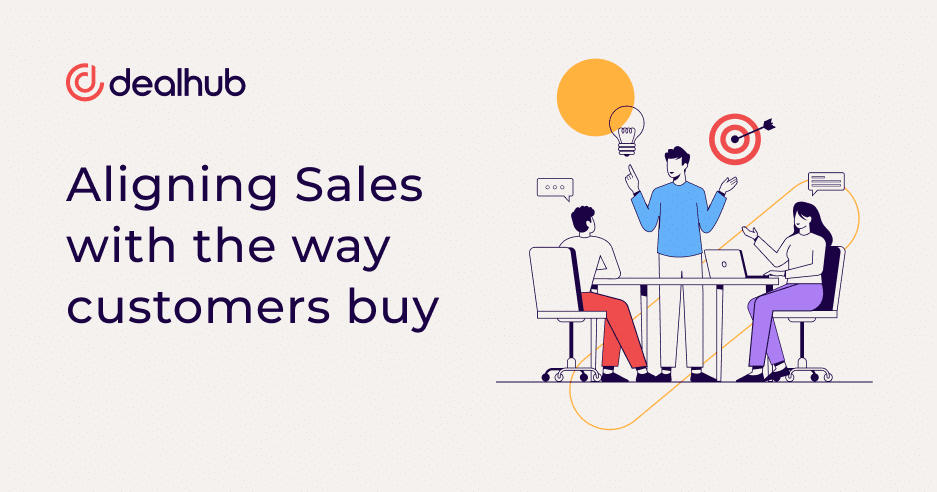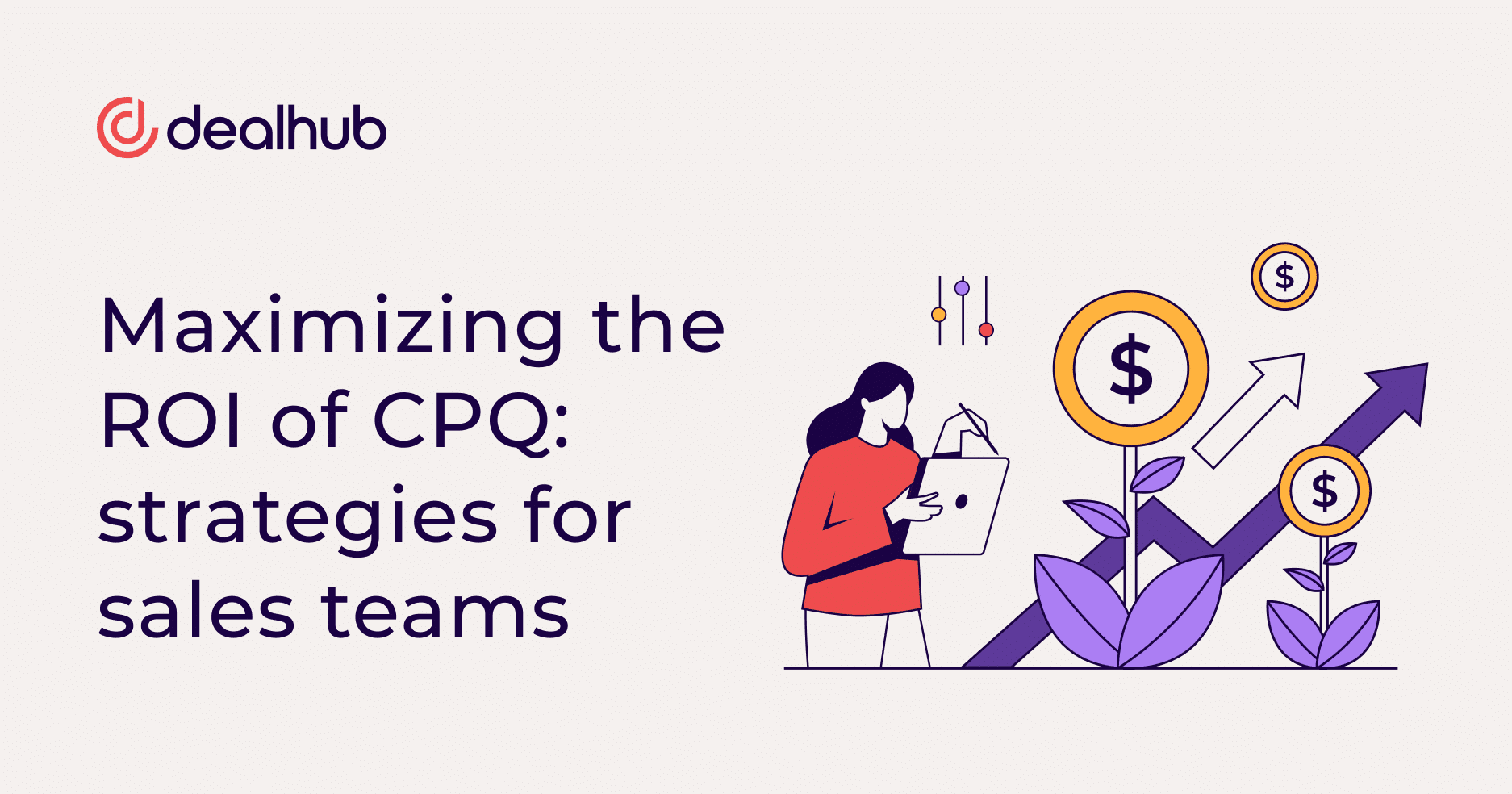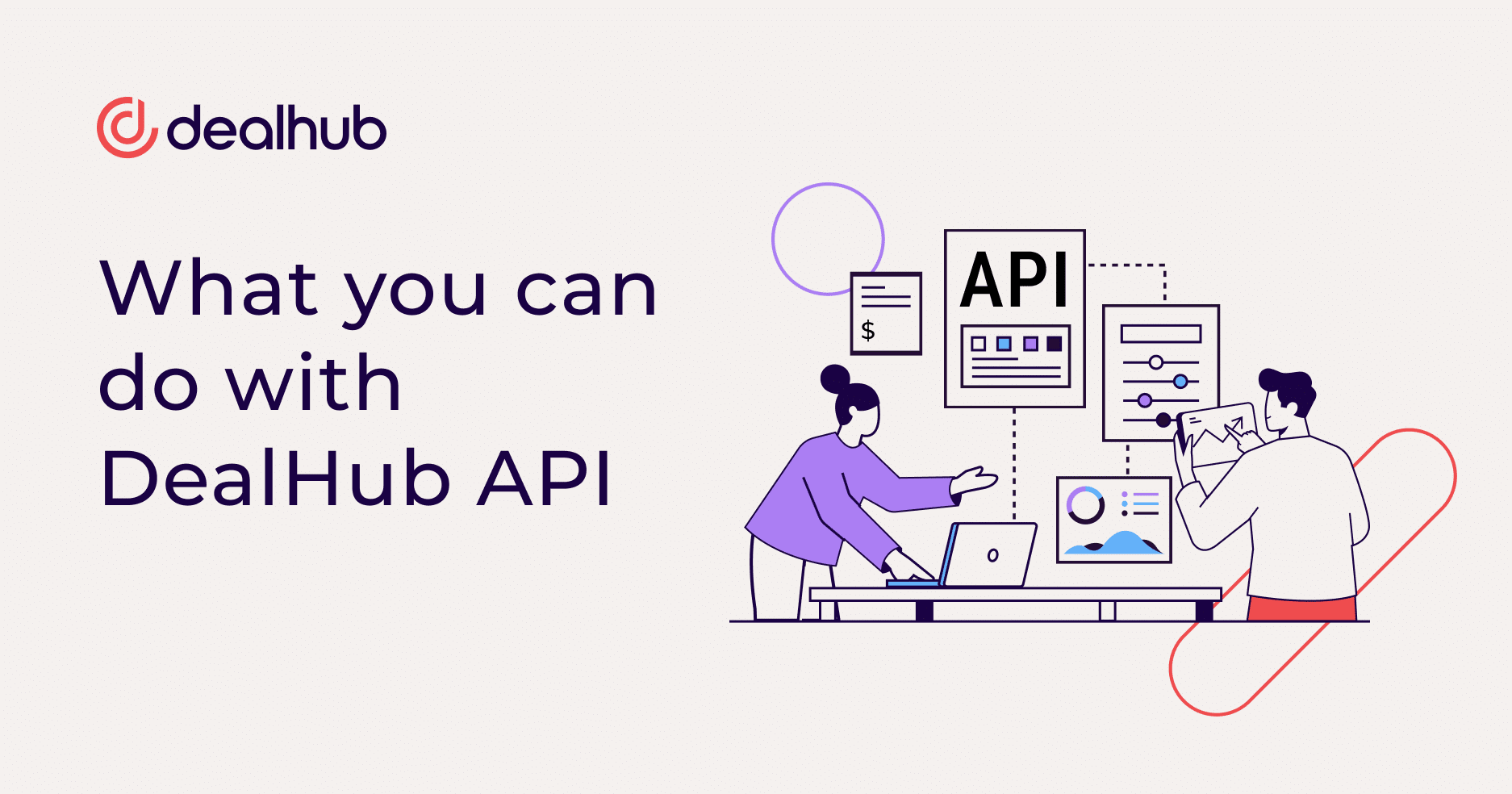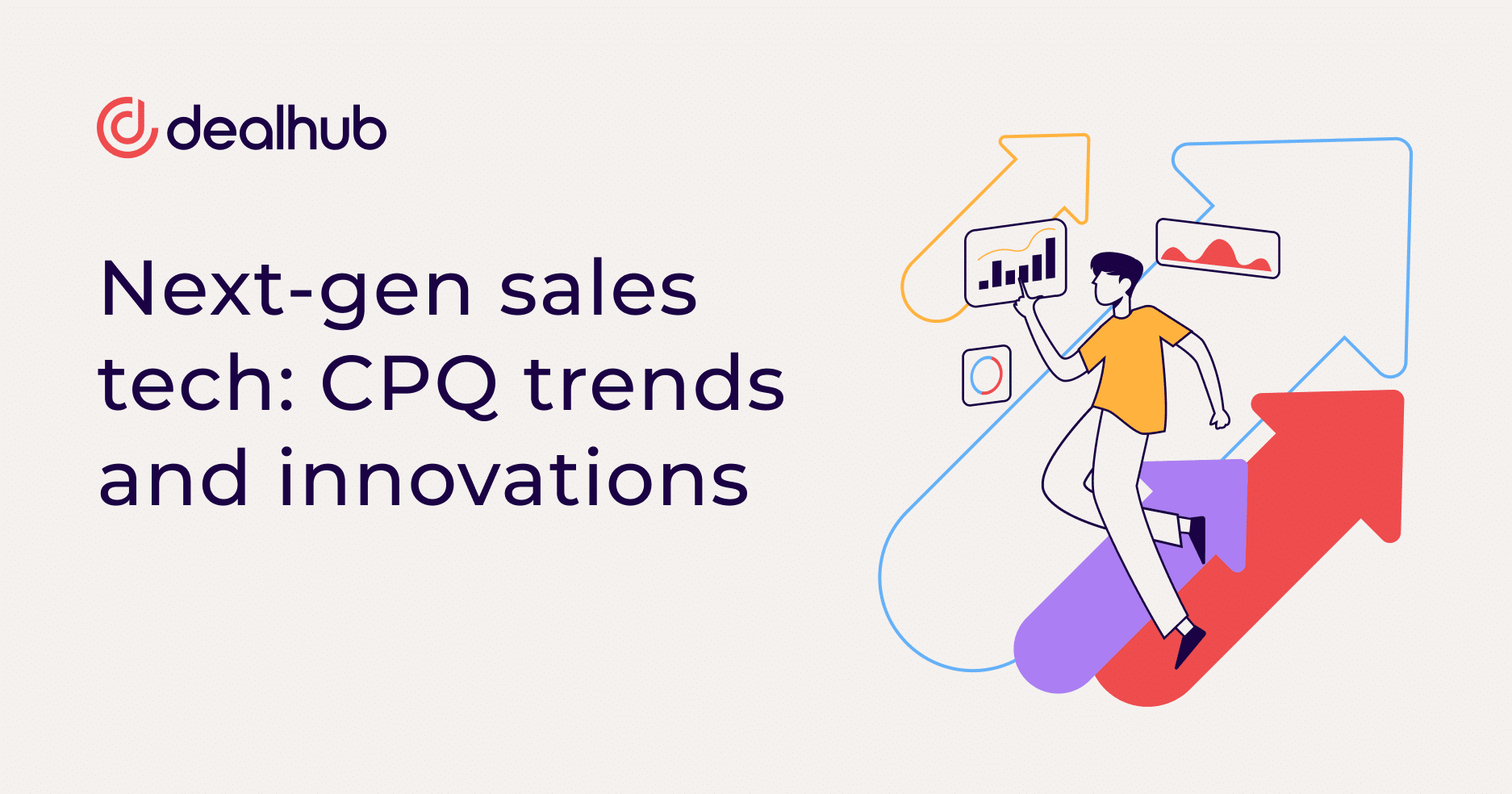The challenges of aligning the sales process with the buying process
These days, customers no longer need to rely solely on salespeople for product information. Buyers now expect easy access to information, enabling them to conduct thorough research on their own before making a purchase. Sales representatives remain essential to the buyer’s journey; however, businesses must realign their sales process to match how the buyer approaches products and services. While this alignment presents its fair share of challenges, they can be easily overcome once understood.
Understanding buyer expectations
To effectively align sales with customer-centric selling, it is crucial to understand their expectations. Today’s client seeks personalized experiences, timely responses, and relevant information. They want to engage with salespeople who understand their needs and can provide value beyond what they can find on their own. Building trust and establishing a genuine connection has become essential to the modern sales process. Sales representatives are no longer just walking, talking fact sheets. The bond they have with a client is more emotional. Clients expect sales teams to be insightful and helpful in directing them toward making the best possible purchase decision that meets their unique requirements.
It’s a good idea to examine the buyer’s journey to understand customer expectations and find ways to build meaningful connections. You can streamline processes and remove obstacles by mapping the journey, understanding how customers react at each stage, and analyzing why some may leave.
Mapping the buyer’s journey
The landscape of customer buying behavior is constantly shifting, so understanding the buyer’s journey has become a fundamental aspect of sales and marketing strategies. The process requires delving into how customers approach a product before purchasing. It illuminates the stages they navigate through and the emotions they experience along the way. When a company effectively maps a buyer’s journey, it gains invaluable insights into a customer’s needs, desires, and pain points. These may evolve over time to match various trends and technology advancements, so a buyer’s journey should be revisited semi-regularly.
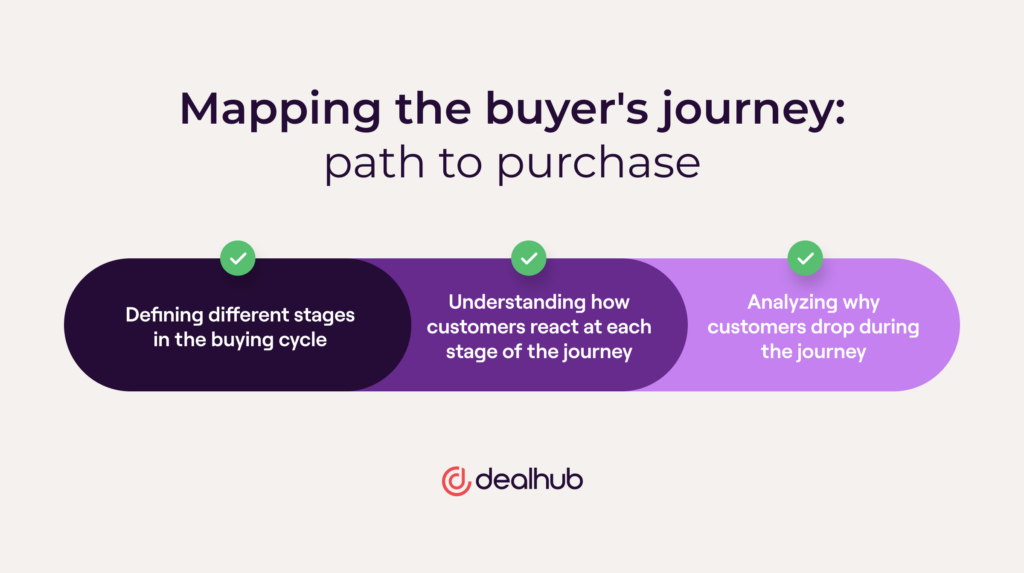
Defining different stages in the buying cycle
Mapping the B2B buying decision process, or buyer’s journey is the key to gaining insights into the stages customers go through before making a purchase. The buyer’s journey typically consists of three main stages:
- Awareness
- Consideration
- Decision
Customers identify a need or problem during the awareness stage and start researching potential solutions. In the consideration stage, they evaluate options and compare features, pricing, and reviews. Finally, in the decision stage, they make a purchasing decision. The goal is to lead the customer through each stage seamlessly so that a sale is all but inevitable.
Understanding how customers react at each stage of the journey
Part of understanding the consumer buying decision process is realizing customers have specific needs and expectations at each stage of the buyer’s journey, and sales teams have unique opportunities to address them:
- In the awareness stage, they seek educational content that enables them to understand their challenges and highlight possible solutions. Sales teams can provide increased value by offering insightful content that addresses these pain points.
- In the consideration stage, customers require detailed information about products or services, seek guidance, and take time to evaluate options. Knowledgeable, engaged sales teams can differentiate themselves by showcasing flexibility and offering solutions to specific problems.
- The decision stage is the final push, where customers may need incentives, discounts, or special offers to drive purchasing. Items offered in the decision stage sweeten the deal.
Analyzing why customers drop during the journey
Analyzing why customers drop off during the buyer’s journey empowers sales teams to identify areas of improvement. And, for every problem, there are solutions a company can implement to address drop-offs. Some reasons a user may leave the buyer’s journey include:
- A lack of personalized attention. Customers expect personalized experiences throughout their buying journey. They may lose interest if they feel that their needs or preferences are not being addressed. Personalization is critical to building trust and rapport for an effective customer-centric sales strategy.
- Slow response times. In today’s fast-paced digital world, customers expect timely responses. If the sales process involves delays in customer inquiries, it can create frustration. Putting in processes that speed response times increases the likelihood of closing the sale.
- A complex or lengthy purchasing process. Streamlining and simplifying the buying process is essential to keeping customers engaged. If customers are confused or frustrated by the buying process, they may drop off. A company can alleviate purchasing process issues by removing unnecessary steps and redundant information gathering as well as clarifying instructions.
- Inadequate information or guidance. Customers rely on accurate and relevant information to make informed decisions. They may lose confidence if they encounter minimal product information, unclear pricing details, or insufficient guidance. However, providing comprehensive and transparent information keeps customers engaged.
- Pricing misalignment. Clients may abandon the sales process and explore other options if they perceive the pricing as unfair, unclear, or too high. Aligning pricing strategies with customer expectations and providing transparent pricing information will minimize drop-offs.
- Unresolved concerns or objections. Customers may have concerns or objections that need to be addressed by the sales team. Active listening and effective objection handling are crucial for keeping customers engaged.
- Competitive offers or alternatives. Customers often compare multiple options. Providing unique value propositions and addressing customer pain points can mitigate the risk of competitors scooping up potential clients.
By understanding the pain points that lead to clients abandoning a sale and addressing them head-on, businesses can optimize their sales process to minimize customer attrition.
Aligning your sales process with the buying process
Now that we have explored the challenges of aligning the sales process with the consumer buying decision process let’s discuss how to keep buyers engaged and aligned throughout their journey. Three key pillars contribute to the success of digital techniques and the alignment between sellers and the buyer experience.
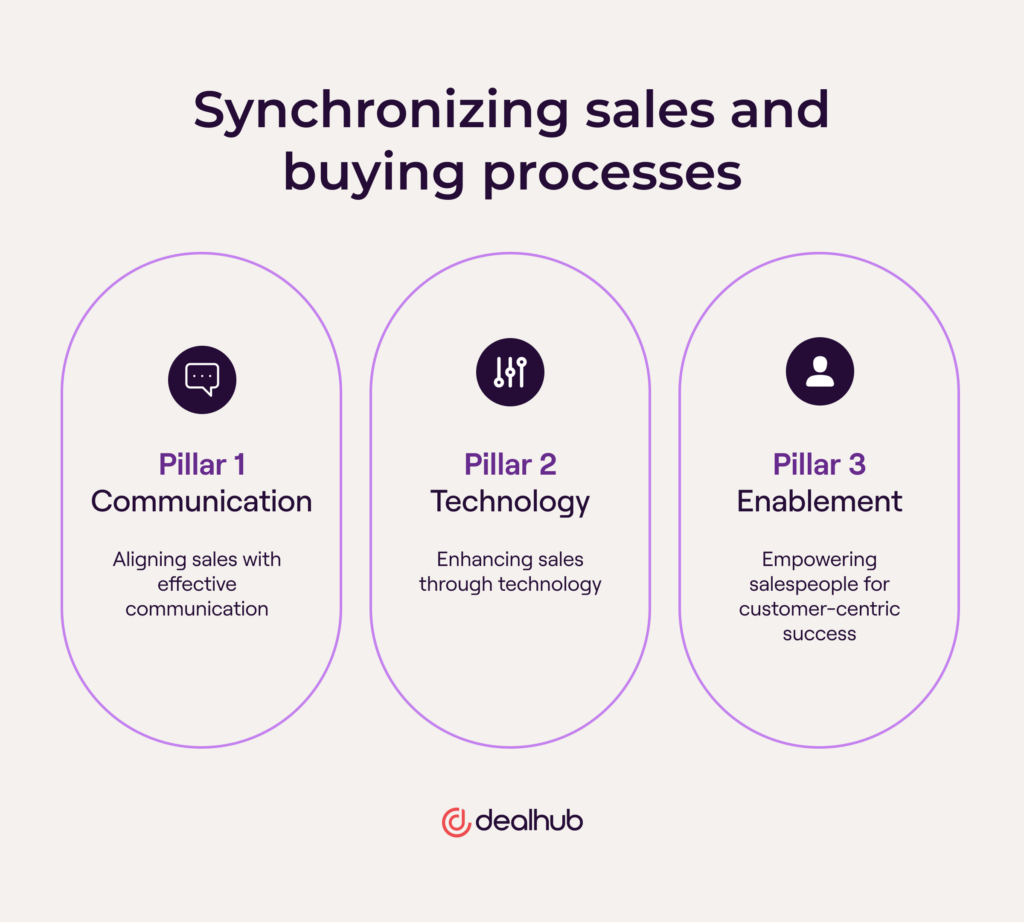
Pillar 1: Communication
Effective communication is the cornerstone of aligning sales with the buyer’s journey. It involves understanding customer-centric sales: how customers prefer to interact and leveraging the proper channels. Businesses can tailor their sales approach by analyzing the customer’s buying process and their preferred communication channels (email, phone, live chat, social media).
Pillar 2: Technology
Technology is vital in streamlining sales processes and enhancing the buyer experience. Evaluating the organization’s tech stack and identifying the tools that truly support the sales team (and customer needs) is essential. By leveraging the right technology, a business can automate repetitive tasks, gather valuable insights, and provide customers with a smoother purchasing experience. Focus on technology that aligns with the company’s and customers’ requirements while removing any bottlenecks hindering the process.
Pillar 3: enablement
Salespeople need the right skills, knowledge, and resources to engage effectively with customers at each stage of a customer-centric sales strategy. Organizations should invest in sales enablement programs to provide teams with the necessary tools and training. This will enhance their ability to understand customer needs, offer relevant solutions, and build meaningful relationships.
Aligning sales processes with a customer journey empowers organizations to better understand the road ahead, reducing friction in the process. When harmonizing sales and buying processes, businesses can provide a seamless and personalized customer buying decision process that meets customer expectations.
How CPQ enables a frictionless buying experience
One powerful tool that facilitates the alignment of sales and the buying process is Configure, Price, Quote (CPQ) software. CPQ solutions enable a frictionless buying experience by simplifying complex sales processes and providing accurate quotes quickly.
CPQ streamlines the configuration of products or services so customers receive accurate and customized quotes based on specific requirements. With CPQ, sales teams can generate quotes quickly and accurately, eliminating manual errors and saving valuable time. This efficiency empowers salespeople to focus on building customer relationships rather than getting caught up in time-consuming administrative tasks.
Moreover, CPQ empowers sales teams to align pricing strategies with customers’ budgets and preferences. By integrating pricing rules and discounts into the CPQ system, businesses can offer competitive, personalized pricing options that resonate with customers. This flexibility creates a positive buying experience to enhance customer satisfaction.
In addition, CPQ provides a centralized platform for salespeople to access relevant product information, pricing details, and quote history. This accessibility ensures that sales teams have all the necessary information at their fingertips to address customer queries promptly and make informed recommendations. By comprehensively viewing the customer’s journey, salespeople can engage in meaningful conversations and tailor their approach.
CPQ for complex selling
B2B sales processes are notoriously complicated. So, how do organizations streamline deal management for better interactions when dealing with complex CPQ interactions?
One of the best ways is with DealHub’s CPQ software sales tool. Its Agile CPQ enables salespeople to create quotes with customized product and pricing configurations based on the buyer’s needs, syncing all interactions with a deal’s documents within the organization’s CRM.
The result is a much more streamlined sales process and a customer-centric sales strategy that safeguards the accuracy of the quote information, as well as product selection and pricing regulations.
Agile CPQ delivers automated cross-team workflows to reduce manual processes and drive efficiency while ensuring a smooth adoption with guided selling playbooks.
Aligning sales with how customers buy is essential in the digital age. By understanding buyer expectations, mapping the buyer’s journey, and leveraging tools like CPQ, businesses can create a frictionless customer process that meets customer needs. Remember, effective communication, leveraging technology, and enabling the sales team are the pillars that contribute to a successful alignment. Embrace these strategies to adapt to the changing buyer landscape and empower your sales team to deliver exceptional customer experiences that drive growth and success.



